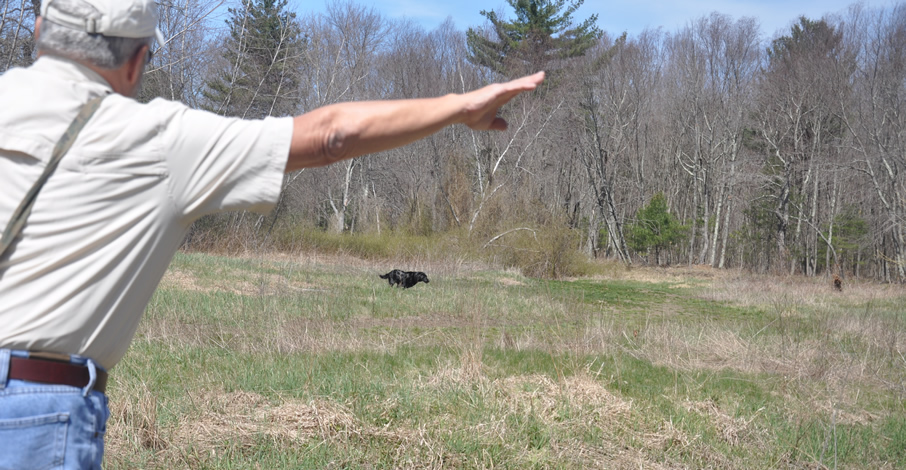
The following three entries (including videos) begin to introduce the art of handling. And more than other sets of drills, handling is an art form. Teaching a dog to handle at a distance is an advanced skill and is done over time with a firm commitment, lots of patience and not advancing to the next step until you have mastered the prior level. That takes patience. You not only have to be patient with the dog’s learning, you have to be patient with advancement of the skills. Handling takes time; but much of the reward, after all, is in the journey.
More than other skills, handling is a partnership and your ability as an active participant in the retrieve will determine your success. It requires self training because in advanced handling you have to learn when to whistle the dog to sit for direction and when to just let him hunt. Many, if not most of us, fall into the trap of over handling. We want the dog to quickly follow a straight line to the bird and when he veers off even a little, we whistle him to sit and try to pinpoint every cast he takes. That often ends up in exasperation for the dog and frustration for you. Handing is not a precise point A to point B to point C to point D skill.
Tip:
When you whistle your dog to sit on land, or to turn and look at you while in water to get him prepared for a hand signal, keep in mind that he may not take the exact direction in his first few steps. Don’t automatically assume he is going in the wrong direction. Often times, especially on the back command, the dog will turn and take a few steps left or right before he goes back. Give him some time and don’t immediately yell ‘no’ and blow your whistle and require him to sit again and start over. He may in fact be responding correctly and he just needs a second or ten to right himself. Learn to ‘read’ your dog and be patient. He is not a remote control car that responds to instant and minute adjustments simply by turning a knob.
You also have to let your dog hunt. Crippled birds move when they hit the ground so often times we are directing our dog to the point of the fall but the bird ain’t there no more. And while we’re blowing our whistle and waving our arms, the bird gets away.
Let the dog hunt. That’s what his nose is for and his nose will amaze you. Retrievers need to trail birds from the point of the fall to wherever they try to run and hide. You have to learn to read your dog and anticipate his next move. Is he hunting? Is he just running? At the appropriate time in his training, your dog has to learn to handle but you have to learn HOW to handle him. If you progress through the training appropriately, you will go a long way toward making this a successful partnership.
Obviously, when using a bumper in a training exercise, the bumper isn’t going anywhere. So if the dog doesn’t get to it right away and he begins to go a bit astray, still let him hunt. He must eventually realize that the retrieve also requires work and patience on his part. The dog giving up on a retrieve too early is not a good thing. He has to learn to hang in there until he finds the bird. Trust me; I’ve been there.
I talk about how you have to get your dog to trust you so be can be confident that where you direct him to go, he will find a bird. This cuts both ways in handling. You have to trust your dog. When he starts following his nose away from the point of the fall, let him hunt. That’s what his nose is for and his nose will amaze you. And the more success he has hunting on his own in that scenario, the less likely he will be to give up early.
Your dog best learns skills taught in small doses over time. Be patient.
Lining drills are the first step in teaching to handle.
Step 1: Lining Drills Begin the Handling Education